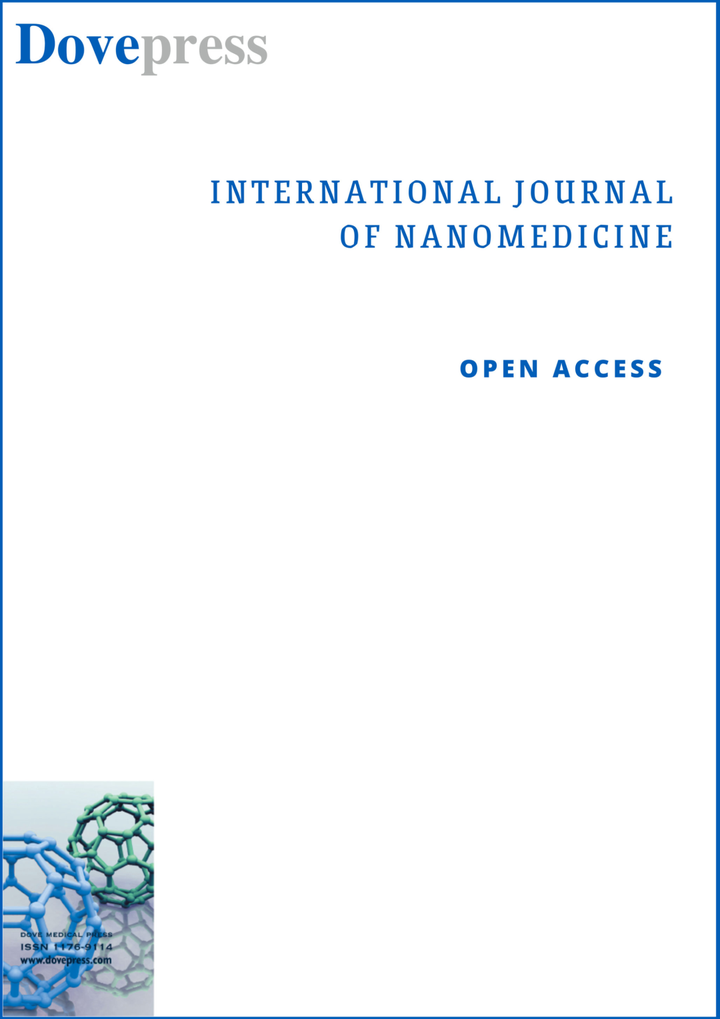仿生铁基纳米粒子重塑免疫抑制性肿瘤微环境,用于代谢免疫疗法
IF 6.6
2区 医学
Q1 NANOSCIENCE & NANOTECHNOLOGY
引用次数: 0
摘要
引言免疫疗法为重振癌症治疗带来了模式转变。方法:因此,对肿瘤微环境(TME)进行代谢重编程可协同提高抗肿瘤免疫疗法的疗效。在此,我们设计了一种铁基纳米平台,称为ERFe3O4 NPs。该平台的特点是中空的Fe3O4纳米颗粒装载有天然产物大黄素,外层包覆有插入DSPE-PEG2000-半乳糖的红细胞膜(mRBCs)。这能有效调节乳酸的产生,从而逆转肿瘤免疫抑制微环境(TIME):结果:由于ERFe3O4 NPs能与高表达半乳糖凝集素(Mgl)的M2样TAMs结合,因此能主动靶向TAMs。ERFe3O4 NPs通过产生还原性乳酸和促使高浓度铁富集,实现了有效的TIME逆转能力。此外,ERFe3O4 NPs 还能提高 CD16/32 的表达,增强 TNF-α 的释放,这表明它能促进 M1 TAMs 极化。体外和体内实验表明,ERFe3O4 NPs能显著诱导肿瘤细胞凋亡和抗肿瘤免疫反应:本研究将中药与纳米材料相结合,协同重编程TAMs,逆转TIME,为提高抗肿瘤免疫治疗水平开辟了新思路。关键词:代谢免疫疗法;纳米颗粒;重编程;氧化铁;巨噬细胞本文章由计算机程序翻译,如有差异,请以英文原文为准。
Biomimetic Iron-Based Nanoparticles Remodel Immunosuppressive Tumor Microenvironment for Metabolic Immunotherapy
Introduction: Immunotherapy has led to a paradigm shift in reinvigorating treatment of cancer. Nevertheless, tumor associated macrophages (TAMs) experience functional polarization on account of the generation of suppressive metabolites, contributing to impaired antitumor immune responses.
Methods: Hence, metabolic reprogramming of tumor microenvironment (TME) can synergistically improve the efficacy of anti-tumor immunotherapy. Herein, we engineered an iron-based nanoplatform termed ERFe3O4 NPs. This platform features hollow Fe3O4 nanoparticles loaded with the natural product emodin, the outer layer is coated with red blood cell membrane (mRBCs) inserted with DSPE-PEG2000-galactose. This effectively modulates lactate production, thereby reversing the tumor immune suppressive microenvironment (TIME).
Results: The ERFe3O4 NPs actively targeted TAMs on account of their ability to bind to M2-like TAMs with high expression of galectin (Mgl). ERFe3O4 NPs achieved efficient ability to reverse TIME via the production of reducing lactate and prompting enrichment iron of high concentrations. Furthermore, ERFe3O4 NPs resulted in heightened expression of CD16/32 and enhanced TNF-α release, indicating promotion of M1 TAMs polarization. In vitro and in vivo experiments revealed that ERFe3O4 NPs induced significant apoptosis of tumor cells and antitumor immune response.
Discussion: This study combines Traditional Chinese Medicine (TCM) with nanomaterials to synergistically reprogram TAMs and reverse TIME, opening up new ideas for improving anti-tumor immunotherapy.
Keywords: metabolic immunotherapy, nanoparticles, reprograming, iron oxide, macrophages
Methods: Hence, metabolic reprogramming of tumor microenvironment (TME) can synergistically improve the efficacy of anti-tumor immunotherapy. Herein, we engineered an iron-based nanoplatform termed ERFe3O4 NPs. This platform features hollow Fe3O4 nanoparticles loaded with the natural product emodin, the outer layer is coated with red blood cell membrane (mRBCs) inserted with DSPE-PEG2000-galactose. This effectively modulates lactate production, thereby reversing the tumor immune suppressive microenvironment (TIME).
Results: The ERFe3O4 NPs actively targeted TAMs on account of their ability to bind to M2-like TAMs with high expression of galectin (Mgl). ERFe3O4 NPs achieved efficient ability to reverse TIME via the production of reducing lactate and prompting enrichment iron of high concentrations. Furthermore, ERFe3O4 NPs resulted in heightened expression of CD16/32 and enhanced TNF-α release, indicating promotion of M1 TAMs polarization. In vitro and in vivo experiments revealed that ERFe3O4 NPs induced significant apoptosis of tumor cells and antitumor immune response.
Discussion: This study combines Traditional Chinese Medicine (TCM) with nanomaterials to synergistically reprogram TAMs and reverse TIME, opening up new ideas for improving anti-tumor immunotherapy.
Keywords: metabolic immunotherapy, nanoparticles, reprograming, iron oxide, macrophages
求助全文
通过发布文献求助,成功后即可免费获取论文全文。
去求助
来源期刊

International Journal of Nanomedicine
NANOSCIENCE & NANOTECHNOLOGY-PHARMACOLOGY & PHARMACY
CiteScore
14.40
自引率
3.80%
发文量
511
审稿时长
1.4 months
期刊介绍:
The International Journal of Nanomedicine is a globally recognized journal that focuses on the applications of nanotechnology in the biomedical field. It is a peer-reviewed and open-access publication that covers diverse aspects of this rapidly evolving research area.
With its strong emphasis on the clinical potential of nanoparticles in disease diagnostics, prevention, and treatment, the journal aims to showcase cutting-edge research and development in the field.
Starting from now, the International Journal of Nanomedicine will not accept meta-analyses for publication.
 求助内容:
求助内容: 应助结果提醒方式:
应助结果提醒方式:


